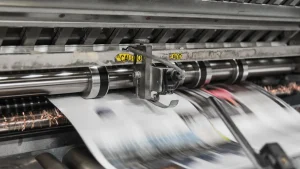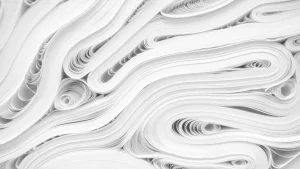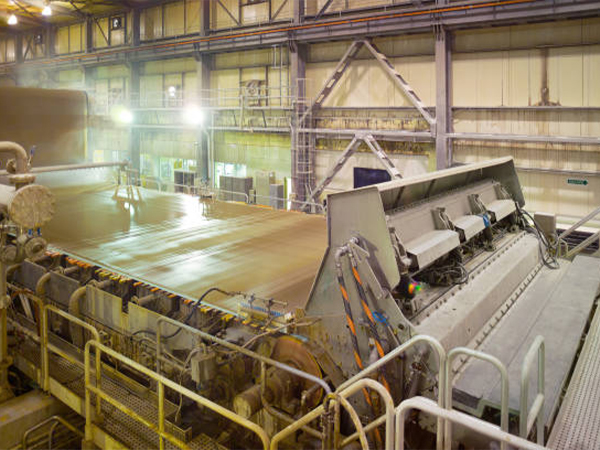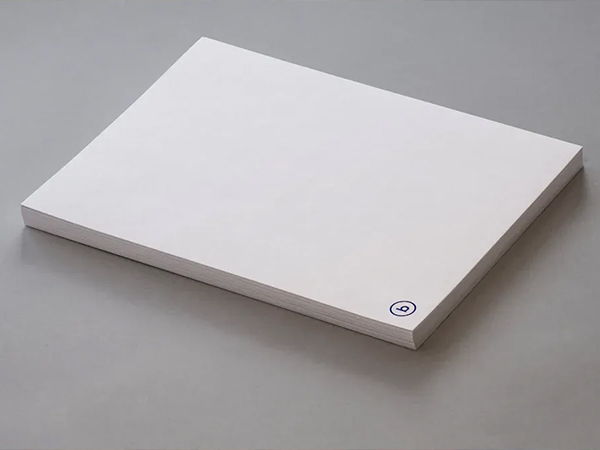
You often face rising pulp costs, increased demand for higher filler retention, and the pressure to boost machine speeds in papermaking. Retention aids help you tackle these challenges by improving the retention of pulp, fines, and fillers, which results in stronger paper and easier water recycling. This not only cuts down on raw material losses but also supports sustainability goals by minimizing waste and reducing environmental impact. Understanding both the visible and hidden benefits of these solutions allows you to optimize production and achieve long-term efficiency.
Key Takeaways
- Retention aids significantly reduce pulp and filler loss, leading to stronger paper and lower raw material costs.
- Using the right retention aids improves drainage and machine runnability, allowing for faster production with fewer interruptions.
- Advanced retention aids lower chemical and energy consumption, contributing to cost savings and environmental sustainability.
- Tailoring retention aid selection to specific paper grades enhances product quality and meets customer demands effectively.
- Regularly assess your retention strategy to optimize performance and unlock hidden efficiencies in your papermaking process.
Introduction: Why Retention Matters
Challenges in filler and fines loss
You face constant pressure to maintain the quality and consistency of your paper. Filler and fines loss presents a major challenge in papermaking. When you lose these valuable components, you see a direct impact on sheet formation and paper strength. Poor retention leads to increased waste and higher costs for raw materials. You must address these losses to keep your process efficient and sustainable.
Retention Aids play a crucial role in minimizing filler and fines loss. By capturing more fibers and fillers within the sheet, you improve the uniformity and durability of your product. You also reduce the load on your water treatment systems, which helps you meet environmental standards more easily.
Impact on cost and efficiency
You want to maximize your profitability and operational efficiency. Improved retention delivers long-term cost savings across several areas. Consider the following table that highlights key benefits:
| Aspect | Description |
|---|---|
| Reduced Raw Material Loss | Improved retention leads to less loss of pulp fibers and fillers during the papermaking process. |
| Decreased Energy Consumption | Faster drainage reduces the energy needed for drying, resulting in lower operational costs. |
| Enhanced Paper Quality | Higher quality paper can be sold at a premium price, increasing revenue potential. |
You also benefit from lower chemical spending when you introduce optimal strength chemicals. Decreased energy usage further contributes to your overall cost savings. When you reduce off-spec production, you enhance your profitability and minimize waste.
Retention Aids help you achieve these results by improving drainage and machine runnability. You see fewer interruptions and more consistent output. As you optimize your retention strategy, you unlock hidden efficiencies that drive your business forward.
What Are Retention Aids?
Definition and common types (e.g., Polyacrylamide, PolyDADMAC)
You rely on retention aids to improve the efficiency of your papermaking process. A retention agent is a chemical process that enhances the retention of functional chemicals in a substrate, leading to reduced chemical usage and waste. When you use these agents, you see several benefits:
- You improve fiber efficiency.
- You enhance the performance of process and functional additives.
- You contribute to wet end stability.
- You extend the life and performance of felts.
Retention aids come in many forms. Each type offers unique advantages for your specific needs. The table below highlights some of the most common types and their functions:
| Type of Retention Aid | Description |
|---|---|
| Coagulants | Help improve the retention of fibers and fillers in the papermaking process. |
| Flocculants | Assist in the aggregation of fine particles to enhance retention. |
| Microparticles | Improve the retention of fibers and fillers. |
| Cationic Starch | Increases retention of fibers on paper machine screens. |
| Polyacrylamide | Forms a gel-like substance to capture fine particles. |
| Polyethylene Imine | A cationic polymer that improves retention and wet strength. |
| PolyDADMAC | A cationic polymer used for retention. |
| Polyamide Amine Epichlorohydrin (PAE) | Enhances retention and wet strength. |
| Carboxymethyl Cellulose (CMC) | Anionic polymer that improves retention and drainage. |
| Polyvinyl Alcohol (PVA) | Anionic polymer used for retention. |
You often see polyacrylamide and PolyDADMAC used in modern mills due to their effectiveness in capturing fines and fillers.
How they work in the wet end of papermaking
You add retention aids at the wet end of the papermaking process. Here, they play a critical role in controlling the behavior of fibers, fillers, and fines. These agents help aggregate fine particles, preventing them from being lost during drainage. By forming bonds between fines, retention aids allow more material to stay within the forming sheet.
Tip: When you use the right retention aid, you reduce the porosity of the fiber mat. This change decreases water drainage, which helps you achieve better sheet formation and improved paper properties.
Drainage aids, which are often cationic, also support this process. They modify the surface tension of fibers, making it easier for water to leave the sheet. This balance between retention and drainage ensures you reach the desired moisture level at the end of the forming stage. You gain better control over sheet quality and machine performance.
Benefits of Retention Aids

Improved filler and fines retention
You gain significant advantages when you improve the retention of fillers and fines in your papermaking process. Better integration of these materials leads to higher opacity, smoother surfaces, and stronger paper. You also notice cleaner white water systems, which means fewer impurities and more stable operations. Improved retention helps you achieve better dewatering efficiency, which can increase your machine speed and lower your energy use. You also support environmental goals by reducing organic and inorganic material in your wastewater, leading to lower COD and BOD levels.
- Enhanced integration of fillers and fines leads to:
- Better opacity, smoothness, and strength of the paper.
- Cleaner white water systems and improved system stability.
- Increased machine speed and reduced energy consumption.
- Lower environmental impact due to reduced material in wastewater.
Conventional filler loading often results in poor retention and lower paper quality. Newer methods, such as precipitating calcium carbonate within pulp fibers, help you achieve superior brightness and durability.
Enhanced drainage and machine runnability
Retention Aids play a vital role in boosting drainage and machine runnability. When you use these aids, you increase the retention of fine particles and improve drainage. This leads to higher productivity, as you can run your machines faster and with fewer interruptions. You also see clearer wastewater, which reduces the environmental impact of water reuse.
- Retention Aids help you:
- Maintain pulp chemistry and final product quality.
- Prevent small particles from draining through the sheet, reducing deposits and improving runnability.
- Achieve effective drainage while retaining essential chemicals.
Note: The right balance between retention and drainage is crucial. Too much retention can hinder dewatering, so you must monitor your process closely.
Reduced chemical and energy consumption
You benefit from lower chemical and energy consumption when you use advanced Retention Aids. These products, such as spherical polyelectrolyte brushes, significantly improve retention rates, even under high shear conditions. By retaining more fines and fillers, you conserve resources and reduce environmental pollution.
| Benefit | Description |
|---|---|
| Improved Retention | Advanced aids boost retention rates, especially in demanding conditions. |
| Resource Conservation | Effective use of aids reduces pollution and saves valuable resources. |
You achieve cost savings and support sustainability by optimizing your chemical and energy use.
Applications in Different Paper Grades

Printing and writing paper
You work in an industry where print quality and paper appearance matter. Retention aids play a crucial role in the manufacturing of printing and writing paper by enhancing both the optical and physical properties of the final product. This improvement leads to superior print quality, which is essential in a market increasingly driven by the demand for high-quality printing paper due to the coexistence of digital and print media. You achieve brighter, smoother sheets and better ink holdout, which helps you meet customer expectations for clarity and sharpness.
Packaging boards
You face different challenges when producing packaging boards. These grades require strength and bulk, so you must select retention aids carefully. The requirements for packaging boards differ from other paper grades, especially regarding cationic polyacrylamides (C-PAMs). The charge density of C-PAMs is crucial for enhancing first-pass retention and strength in white ledger sheets, but this may not apply in the same way to packaging boards. While molecular weight matters, you should focus more on charge density to maximize the effectiveness of your retention program. You can tailor your approach to achieve the right balance between strength and cost.
Note: Dosage and process conditions affect retention performance. The table below shows how CSPAM dosage and pH level influence transmittance, which relates to retention efficiency.
| CSPAM Dosage (mg·g−1) | pH Level | Transmittance (%) |
|---|---|---|
| 2 | 9 | 77.3 |
| N/A | 7 | Lower than 77.3 |
| N/A | 8 | Lower than 77.3 |
Specialty papers
You encounter unique challenges when producing specialty papers such as filter, decorative, or technical papers. These products demand specialized properties and high performance. The use of advanced retention aids becomes essential to meet the stringent quality standards necessary for these applications. You must check fiber charge and cationic demand profiles, use retention aids appropriately based on stock thickness, and ensure optimal charge balance to prevent bridging or contamination. By doing so, you maintain the integrity and function of specialty papers.
- Check fiber charge and cationic demand profiles.
- Use retention aids appropriately based on stock thickness.
- Ensure optimal charge balance to prevent bridging or contamination.
Amazon Chemicals’ Retention Aid Solutions
Product range (polyacrylamide-based etc.)
You need reliable solutions to improve your papermaking process. Amazon Chemicals offers a diverse range of polyacrylamide-based retention aids designed for the paper industry. These products help you retain fiber, padding, and fines more effectively. You see lower pulp and chemical consumption, which reduces your production costs. You also notice enhanced paper quality and greater production efficiency.
- Polyacrylamide emulsion types include water-in-oil and water-in-water formulations.
- These emulsions have higher molecular weight and better water solubility than powder forms.
- You use them as retention and drainage aids to optimize your process.
The following table highlights a key product specification:
| Chemical Name | Specification | Appearance | Molecular Weight | Charge Density | Active Content | Recommended Working Concentration | Shelf Life | Application |
|---|---|---|---|---|---|---|---|---|
| Emulsion Flocculant | Cationic | Light Yellow To Milky White Emulsion | Medium To Ultra High | Low To Ultra High | 35%-50% | 0.1%-0.5% | 1 Year | Paper Industry As Retention And Drainage Aid |
You gain flexibility by choosing the right product for your specific grade and process conditions.
Technical support and customization
You want more than just chemicals; you need expert guidance and tailored solutions. Amazon Chemicals provides technical support and customization to help you achieve optimal results. You access a wide range of products and receive expert consultation. Mill audits and on-site trials allow you to evaluate and test solutions directly at your facility. Trained chemical engineers design custom chemical applications to meet your unique needs.
| Service Offered | Description |
|---|---|
| Product availability and consultation | Access to a range of products and expert advice |
| Mill audits and trials | Evaluation and testing at the mill site |
| Custom chemical application design | Tailored solutions for specific needs |
| On-site support | Assistance in major cities like Lahore and Karachi |
| Trained chemical engineers | Ensures precision and cost savings for mills |
You benefit from on-site support in major cities, ensuring quick response and hands-on assistance. With Amazon Chemicals, you receive solutions that match your process requirements and help you maximize efficiency with Retention Aids.
Driving Efficiency with the Right Retention Aid
Selecting the right retention aid transforms your papermaking process. You see measurable improvements in efficiency, quality, and sustainability when you match the product to your specific needs. Case studies highlight how different systems impact retention and drainage. The table below summarizes key findings from recent research:
| Study | Findings |
|---|---|
| Nicu et al. | Higher molecular weight chitosans improved flocculation, boosting retention and drainage. |
| Chi et al. | Quaternary chitosan increased drainage rates and enhanced CaCO3 filler retention. |
| Chitosan/nano-SiO2 system | Improved retention and drainage in recycled fibers. |
| Chitosan/bentonite system | Enhanced retention and drainage in tobacco pulp sheets. |
| Chitosan/CNF system | Reduced drainage times with cellulose nanofibers. |
You must consider several factors before choosing a retention aid. Product properties and environmental conditions play a critical role in performance. The following table outlines what you should evaluate:
| Factor Type | Description |
|---|---|
| Product Factors | Molecular weight, solubility, and application method. |
| Environmental Factors | Pulp pH, temperature, and machine operating conditions. |
To optimize your use of retention aids, follow these steps:
- Use retention and drainage agents to maintain fiber consistency and improve paper quality.
- Select chemicals that prevent deposits and reduce additive costs.
- Apply the right techniques to avoid tearing and maintain machine efficiency.
You also gain additional benefits:
- Enhance paper strength by improving fiber bonding.
- Control porosity for better ink absorption and printability.
- Increase opacity by retaining fillers, which is essential for high-quality printing.
Optimizing your retention aid strategy reduces chemical usage, lowers pulp consumption, and minimizes waste. You achieve cost savings and support environmental goals by decreasing chemical discharge. When you focus on these steps, you unlock the hidden potential of Retention Aids and drive your papermaking operation toward greater efficiency.
You see both visible and hidden improvements when you use Retention Aids in papermaking. These solutions boost efficiency, enhance paper quality, and support sustainability. You also gain important environmental benefits:
- You reduce losses of pulp components by increasing retention of fine fractions.
- You improve dewatering, which lowers energy needs.
- You manage water better, cutting wastewater and chemical risks.
- You conserve resources and minimize pollution.
To get the best results, you should assess your current strategy. You can measure first-pass retention, test charge density, and use dynamic drainage testers. By optimizing your approach, you unlock greater efficiency and environmental gains.
FAQ
What is the best way to choose a retention aid for my paper mill?
You should evaluate your pulp type, machine speed, and desired paper properties. Test different products under real conditions. Consult with technical experts to match the retention aid to your process. This approach helps you achieve optimal efficiency and paper quality.
How do retention aids affect environmental compliance?
Retention aids help you reduce waste and lower chemical discharge. You improve water clarity and decrease the load on your treatment systems. This supports your efforts to meet environmental regulations and sustainability goals.
Can I use retention aids with recycled fibers?
Yes, you can use retention aids with recycled fibers. These products help you manage fines and fillers, which often increase in recycled pulp. You maintain paper strength and quality while improving drainage and machine runnability.
Do retention aids impact paper strength?
Retention aids help you retain more fibers and fillers in the sheet. This improves paper strength and surface properties. You produce higher-quality paper that meets customer requirements.
How do I know if my retention aid program is working?
You should monitor first-pass retention, drainage rates, and paper quality. Use laboratory tests and machine data to track improvements. If you see fewer breaks, cleaner water, and better sheet formation, your program works well.






